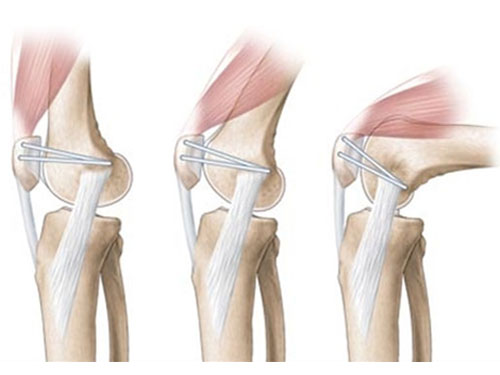MPFL

The Medial Patellofemeral Ligament (MPFL) attaches the kneecap (patella) to the inner part of the knee. It helps stabilize the kneecap as the knee moves, preventing it from moving or dislocating outward.
What is the medial patellofemoral ligament (MPFL)?
The medial patellofemoral ligament is a part of the complex network of soft tissues that stabilize the knee. The MPFL attaches the inside part of the patella (kneecap) to the long bone of the thigh, also called the femur.
Together, the patella and femur compose the patellofemoral joint.
Injury to the MPFL can occur when the patella dislocates or becomes subluxated (partially dislocated) due to a trauma experienced during athletics or an accident, as a result of naturally loose ligaments – most frequently seen in girls and women – or due to individual variations in bony anatomy. People with these injuries are described as having patellar instability.
What is MPFL reconstruction?
MPFL reconstruction is a surgery in which a new medial patellofemoral ligament is created to stabilize the knee and help protect the joint from additional damage. (Find a surgeon who performs MPFL reconstruction.)
It offers an excellent treatment option for people who have experienced more than one dislocation. The procedure is relatively new. Historically, although some patients benefitted from surgery to tighten the damaged ligament, as recently as around 2006, many individuals with damage to the MPFL had few treatment options beyond immobilization and rehabilitation.
Causes
The MFPL is most commonly injured when the kneecap is dislocated. Patients with an underlying abnormality of the knee, ligament laxity or weak leg muscles are at an increased risk for patella dislocations. Individuals who play sports or are involved in activities that involve pivoting are also at high risk.
Treatment
Most first time MPFL injuries can be treated non-surgically with NSAIDs and immobilization. It’s then followed by physical therapy to strengthen the muscles around the knee. Your physician may recommend surgery if the injury is more severe, or if there are small pieces of detached bone or cartilage in the knee. MFPL reconstruction is often recommended for patients who experience repeated kneecap dislocations.
Depending on the patient’s individual condition, knee surgeons will either directly repair the ligament, or reconstruct the ligament. Surgeons will use a graft from another ligament in the patient’s own body or with that of a donor. This will provide stabilization to the knee and will allow the patient to return to normal activity.
Typically, MPFL reconstruction is performed at an outpatient facility. The knee will be immobilized while walking and standing for a period of six weeks, followed by a program of physical therapy. Patients usually return to normal activity after a period of four to six months.

